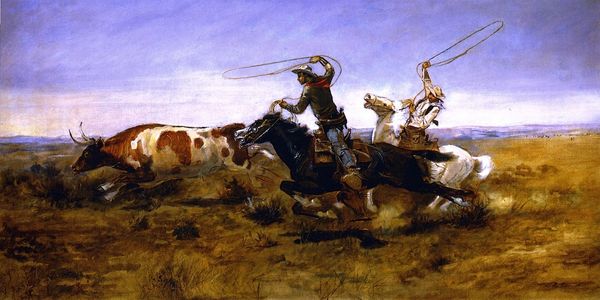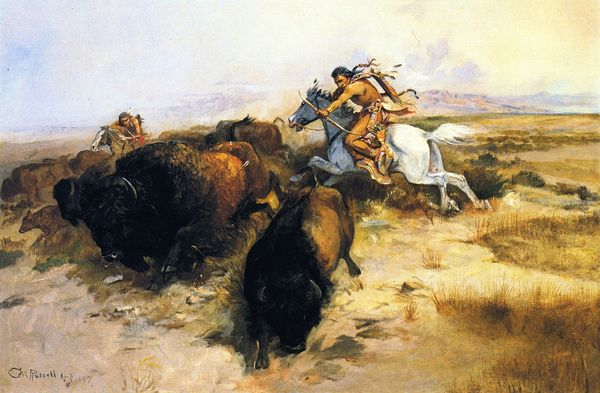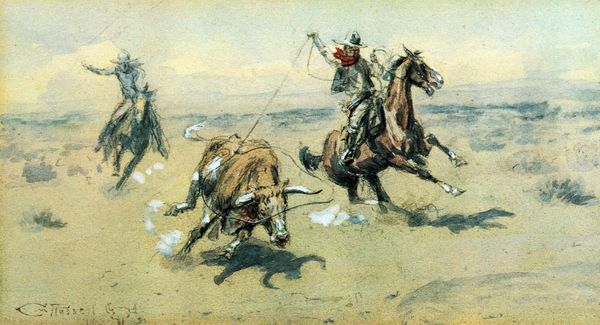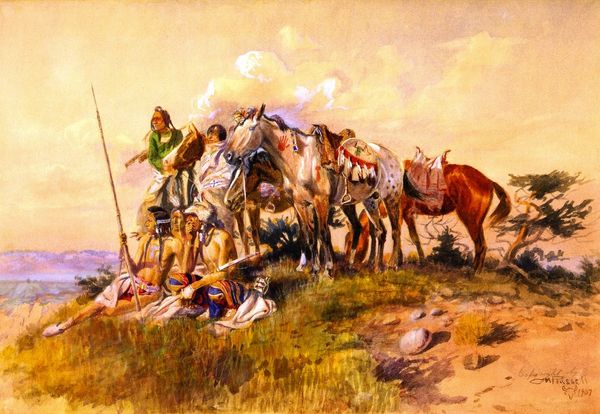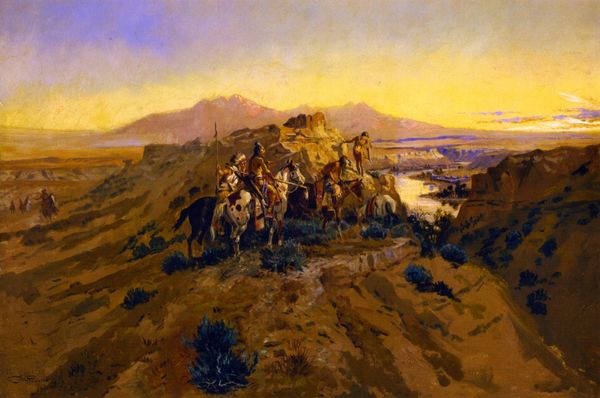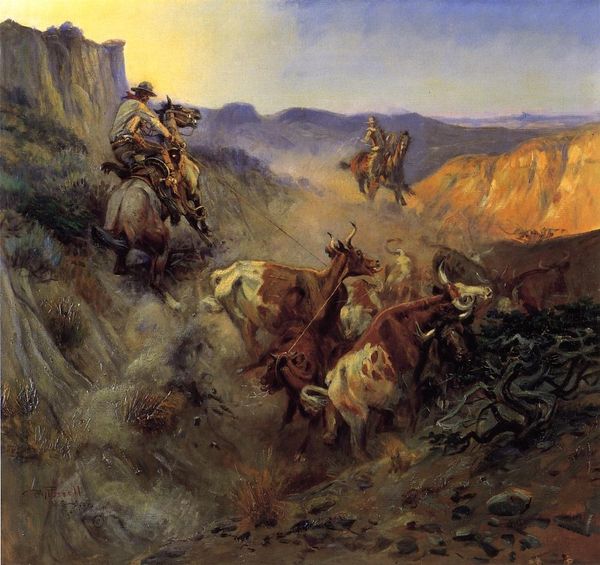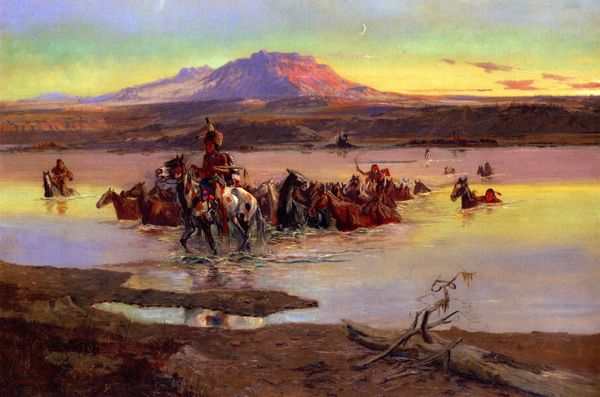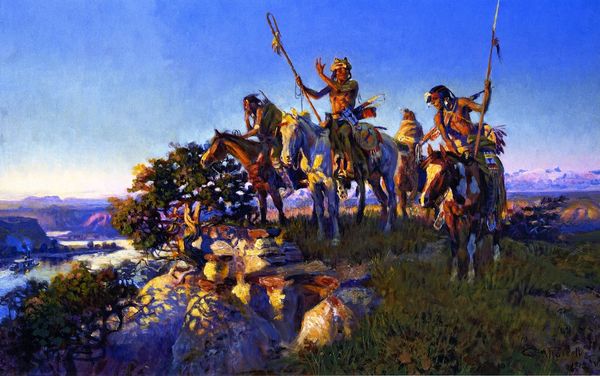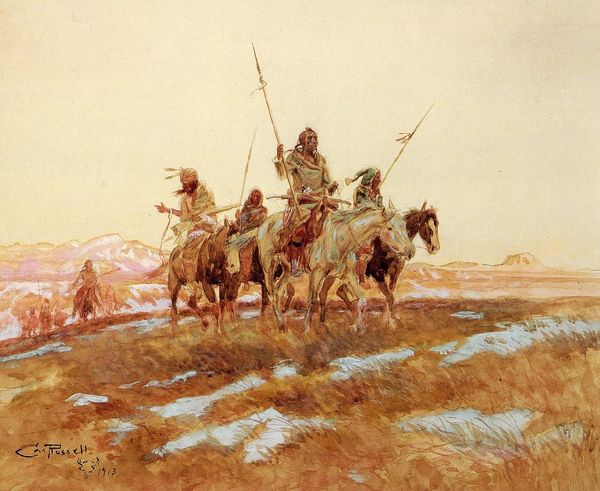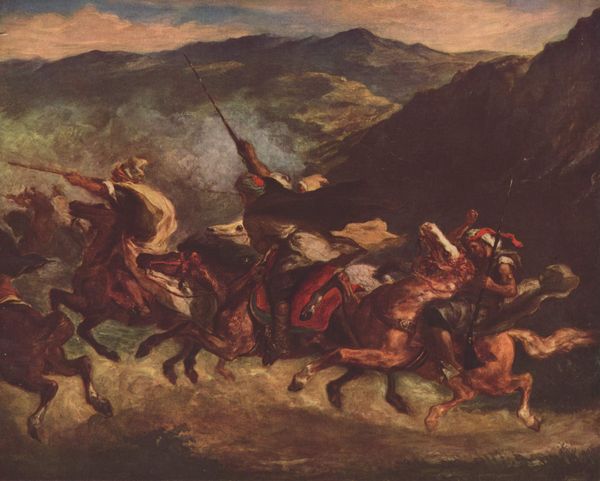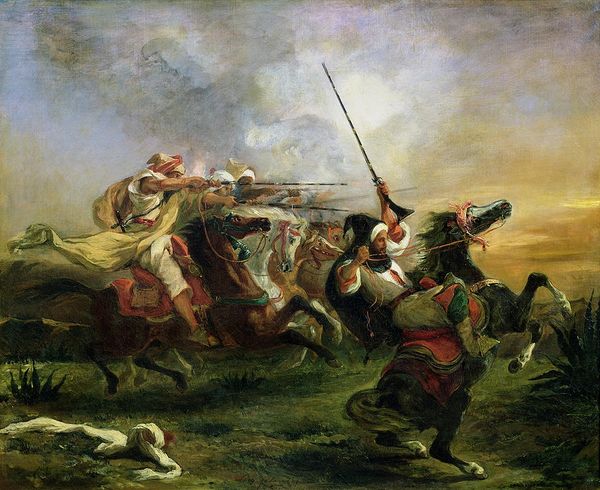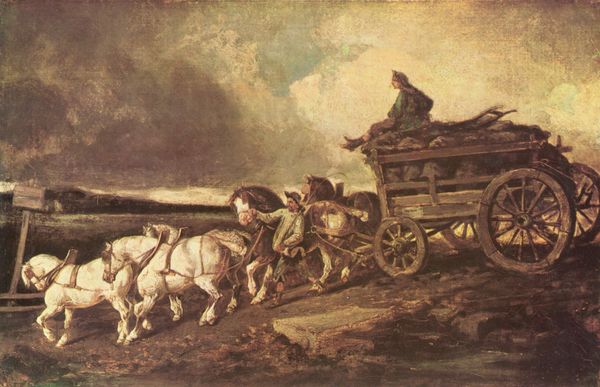
Copyright: Public domain
Editor: This is Charles M. Russell's "Crossing the Range," an oil painting from 1890. I'm really drawn to the way the artist captures the movement of the horses through the water. What elements of composition and color stand out to you in this work? Curator: Certainly. Observe how Russell utilizes a horizontal composition to emphasize the vastness of the landscape, bisected by the plane of the water. The modulation of blues and grays in the water against the varied hues of the horses' coats creates a chromatic tension. How does the light source—apparently a setting or rising sun—impact the depth and texture? Editor: It casts long shadows and seems to highlight the figures in the foreground, adding a sense of drama, but is the light distributed as consistently as it might be? Curator: Precisely. Russell's brushwork, visible especially in the horses' manes and the water's surface, introduces a tactile dimension. Consider how these choices manipulate our perception, almost independent of subject matter, don't you think? How does the interplay between representational accuracy and artistic interpretation function within this specific framework? Editor: So, you are saying that the *way* something is painted and its composition matter more than the image's story or deeper meaning. Curator: Indeed. By examining the formal relationships—color, form, line, and texture—we decode the artistic logic driving its creation and influencing our aesthetic encounter. Does focusing solely on these aspects alter your initial response to the artwork? Editor: It makes me appreciate how the artist manipulates these elements to create a certain effect, beyond the historical context. Curator: A formal analysis hones our perception to grasp these nuances, thus deepening our aesthetic apprehension of the work itself.
Comments
No comments
Be the first to comment and join the conversation on the ultimate creative platform.
